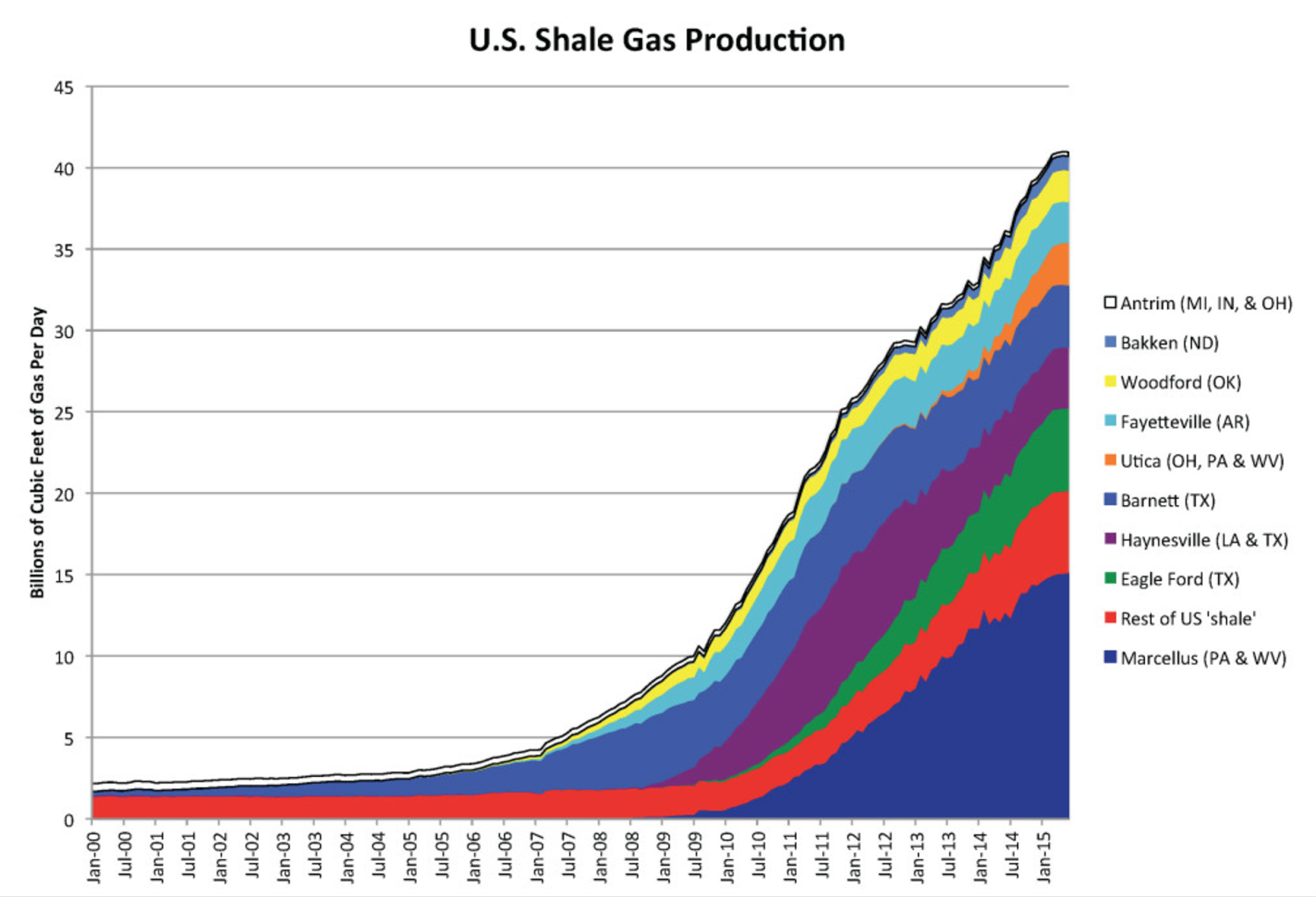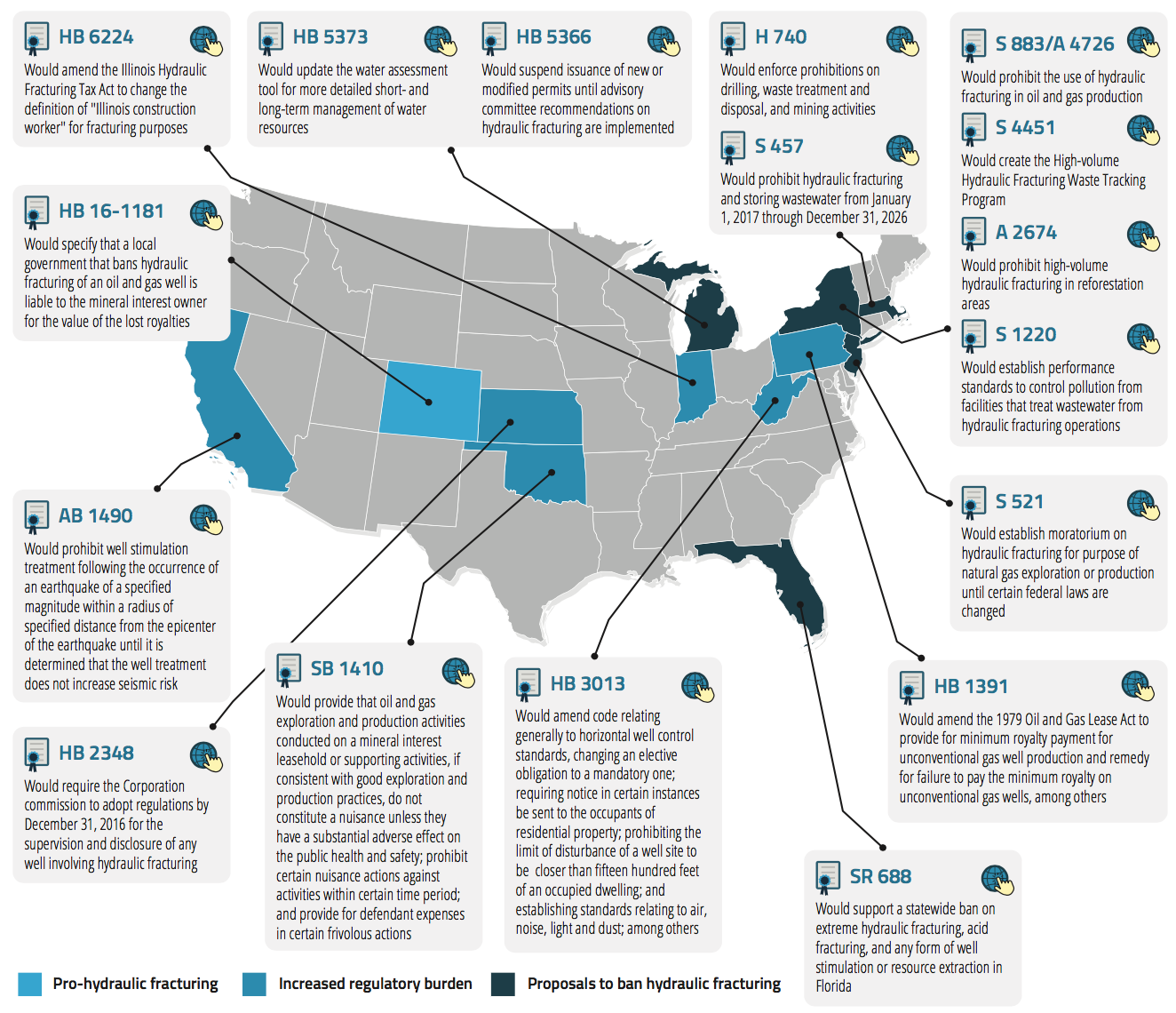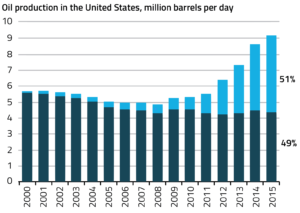By Jannis Kreilis
On April 4, 2017, Maryland became the second state in the country to ban fracking after a similar decision in New York in 2015.

Marcellus shale. Source: NYC.gov
Maryland’s Senate approved the bill in late March. As the lawmakers engaged in debates, Governor Larry Hogan (R) announced on March 17 that he supported the bill, calling it “an important initiative to safeguard our environment.”
As New York banned the practice through an executive order by Gov. Andrew Cuomo, Maryland is the first to ban fracturing by law among states where hydraulic fracturing is feasible. Vermont’s lawmakers forbade shale drilling in 2012, despite the state having no shale deposits.
The state currently does not have any hydraulic fracturing sites, but the western part of Maryland lies above the Marcellus shale location, the most prolific area for natural gas production among other shale regions, with drilling taking place throughout Pennsylvania, West Virginia, and Ohio. The industry sees a similar potential for shale gas development in western Maryland.
Several other states have seen a similar debate arise between proponents of hydraulic fracturing who value the economic benefits from an increased oil and gas production and opponents who warn of the potential environmental damage caused by fracturing, which requires injecting large amounts of water with chemical additives into the shale rock to release the hydrocarbons trapped inside.

U.S. Shale Gas Production. Source: Art Berman.
In March 2017, legislators in Florida also analyzed the possibility of banning fracking in the state, but could not agree whether a further study on the costs and benefits of fracking was necessary before considering a prohibition. Because of this disagreement, the bill is now considered dead.
Meanwhile, a bill to ban fracturing on non-federal lands was approved by an Assembly Committee in Nevada in early April. The bill would grandfather the four existing licensees but would have a limited impact overall, as most of the land in Nevada is owned by the federal government.

Introduced legislation on hydraulic fracturing (January-October 2016). Source: EnerKnol.
However, the industry has enjoyed recent support from the federal government. The Trump administration has announced plans to repeal a rule setting standards for hydraulic fracturing on federal lands passed in 2015. The rule tightened regulations over the integrity of well casing, storage of waste fluids, and public disclosure of the chemicals used. Soon after its adoption, however, the rule was contested in court over the authority of the Bureau of Land Management to regulate hydraulic fracturing.

Source: EIA
In addition, courts in several states, such as Pennsylvania, Ohio, and Louisiana, have revoked municipal fracturing bans, commonly arguing that they were preempted by state law. In May 2015, Oklahoma and Texas passed laws prohibiting local governments from imposing any ordinances to prevent hydraulic fracturing.
Despite Maryland’s ban, the nationwide debate on the merits of fracturing is far from over. Meanwhile, hydraulic fracturing has moved from the edge of technological innovation to the mainstay of the oil and gas industry: in 2015, more oil was produced in the U.S. from shale wells than from conventional wells.

